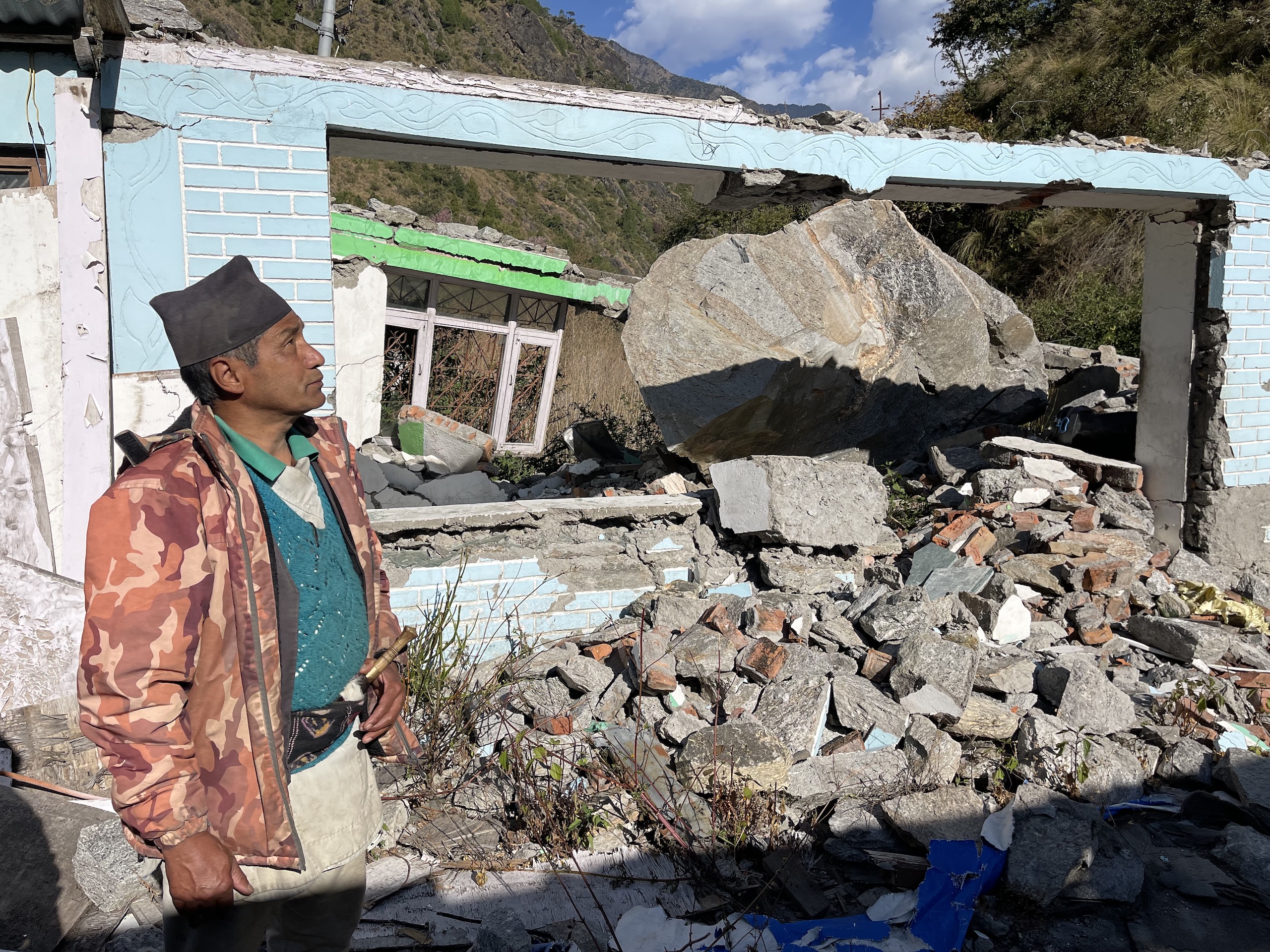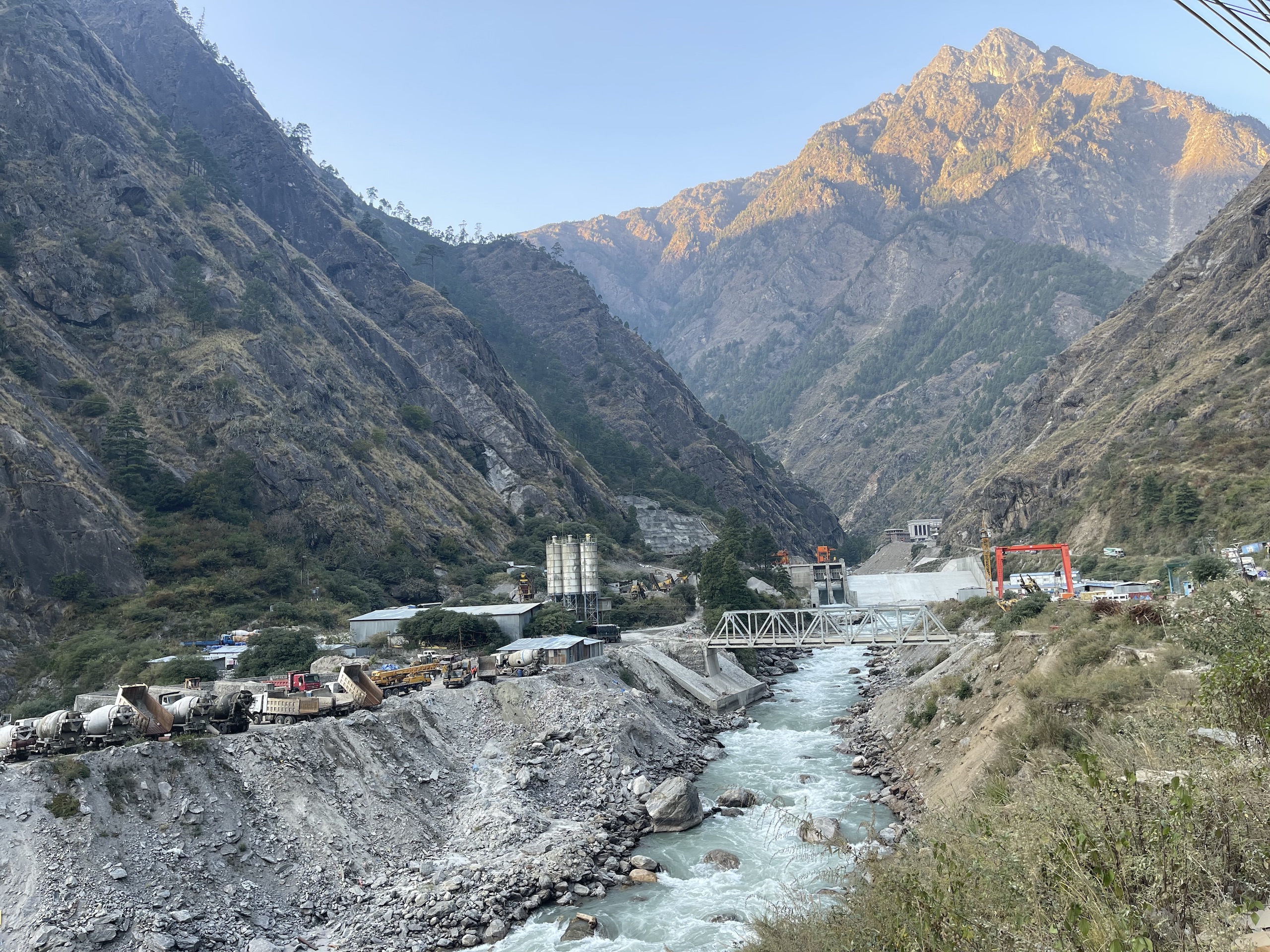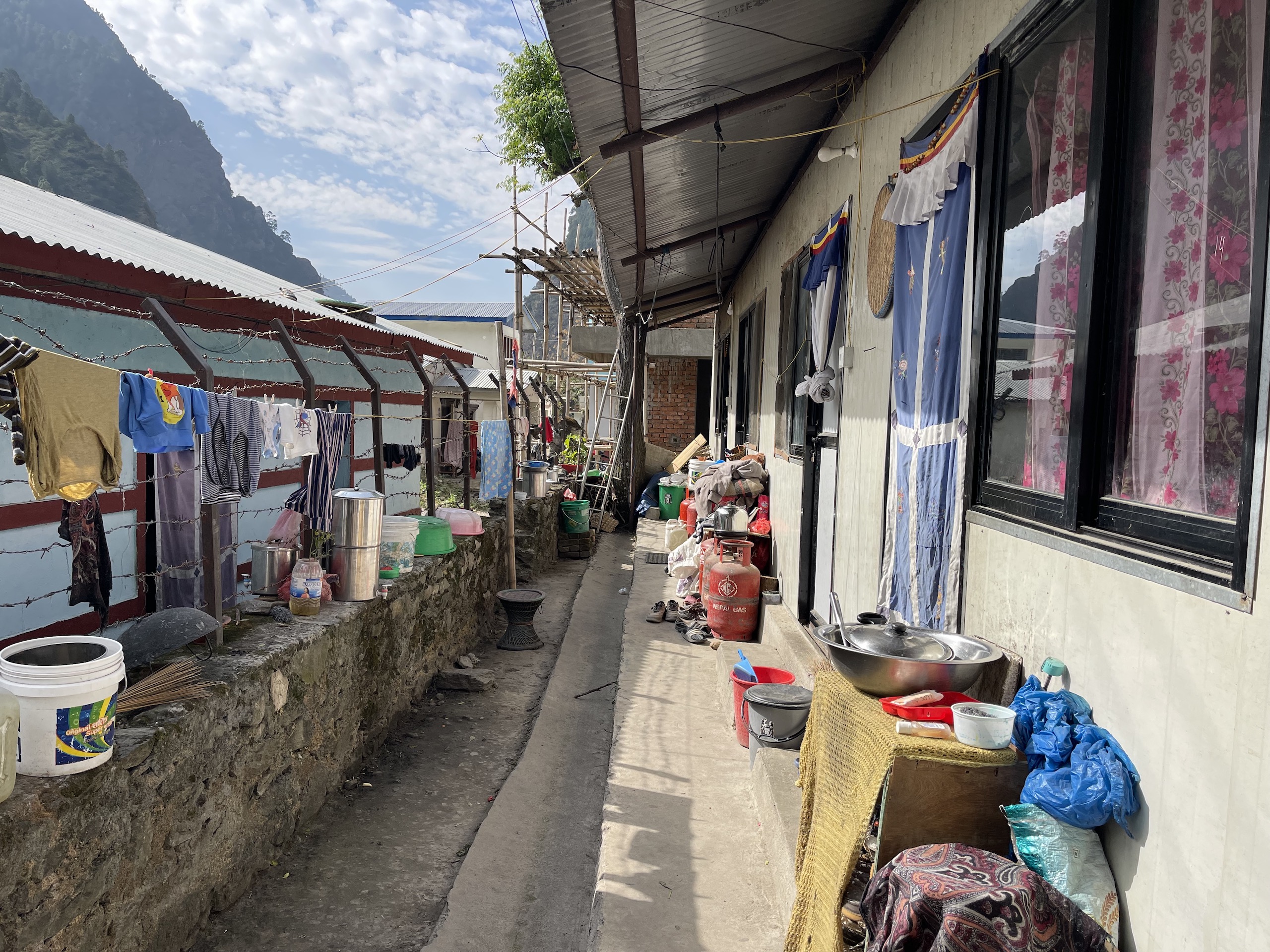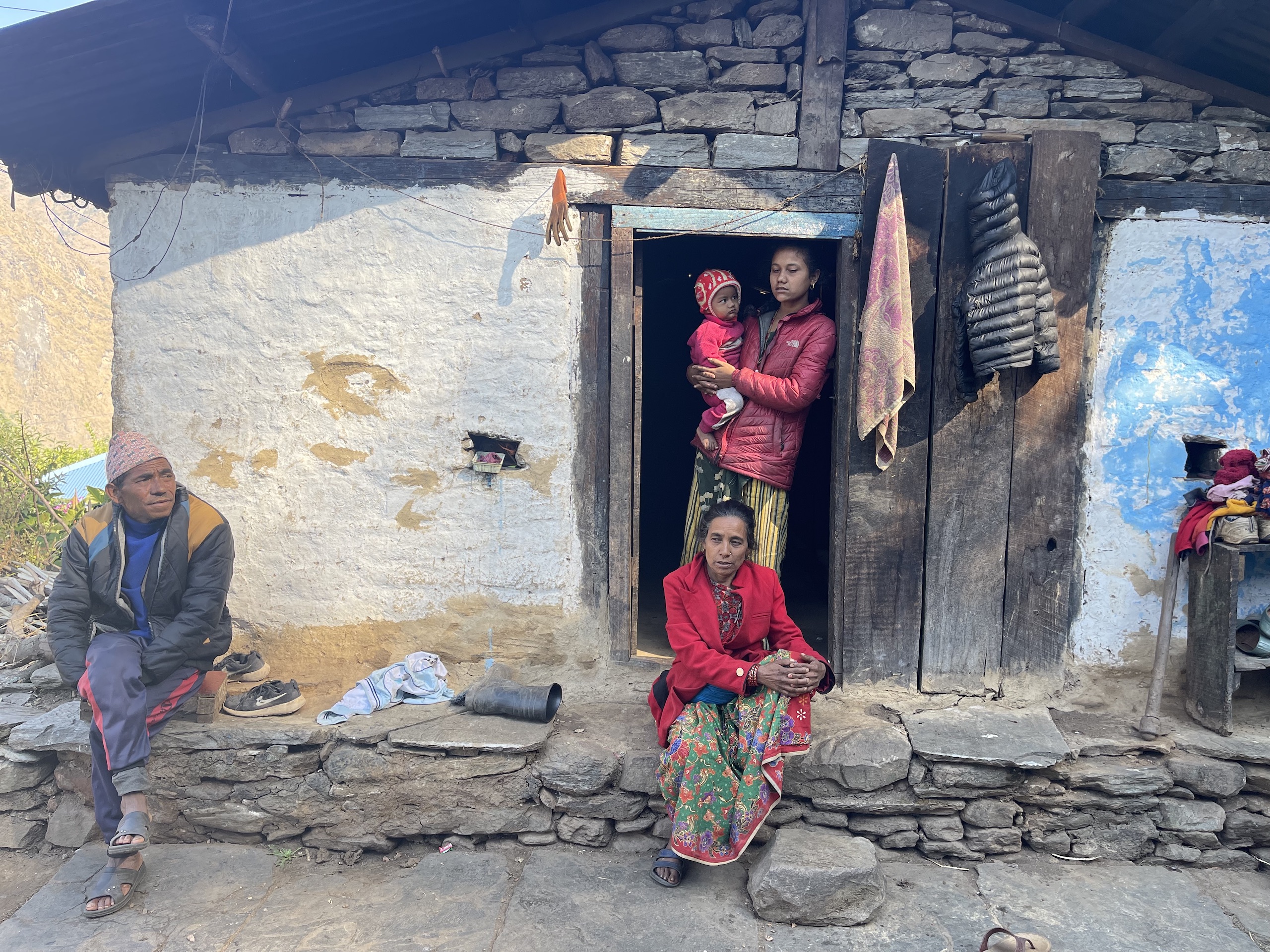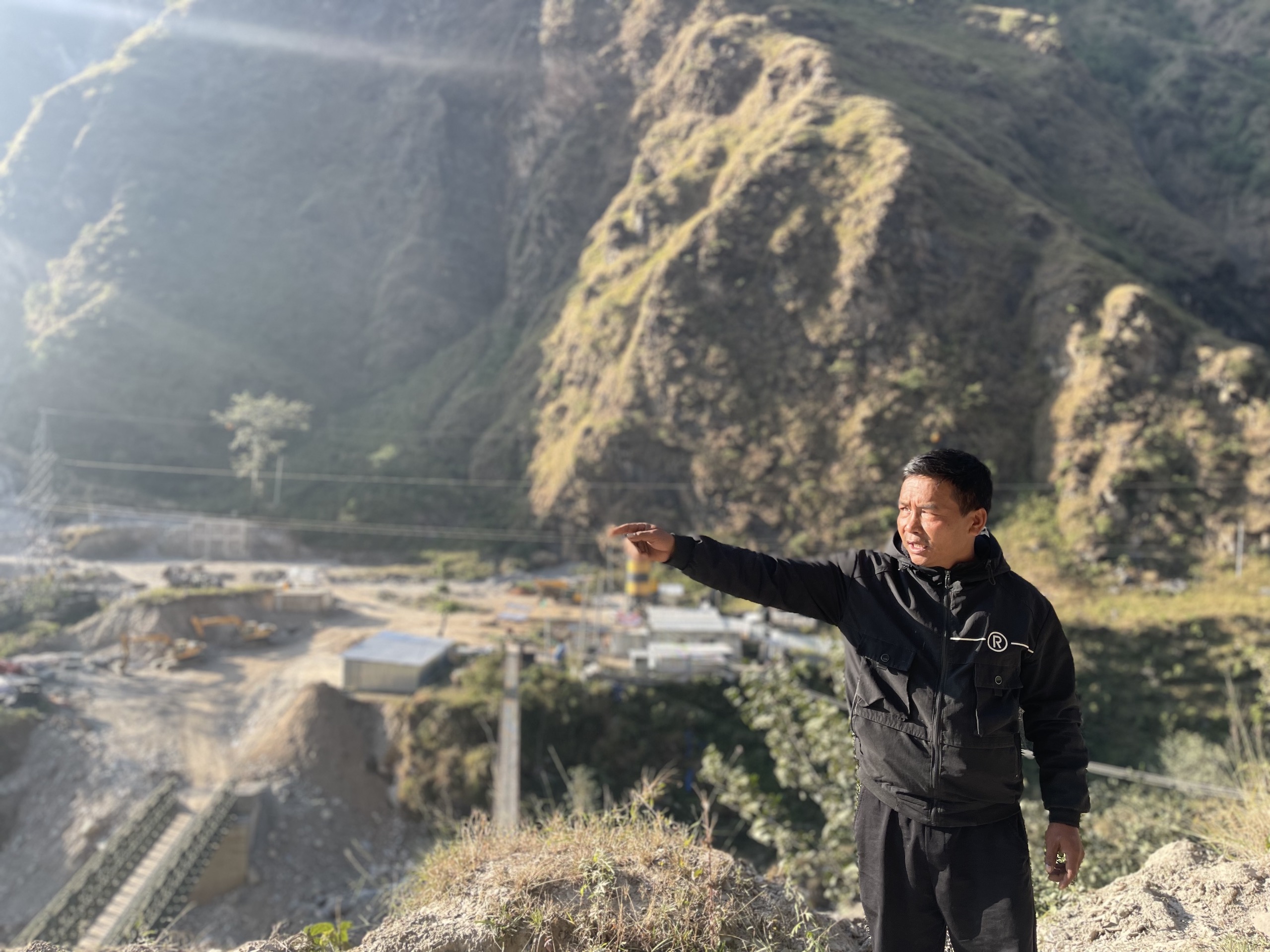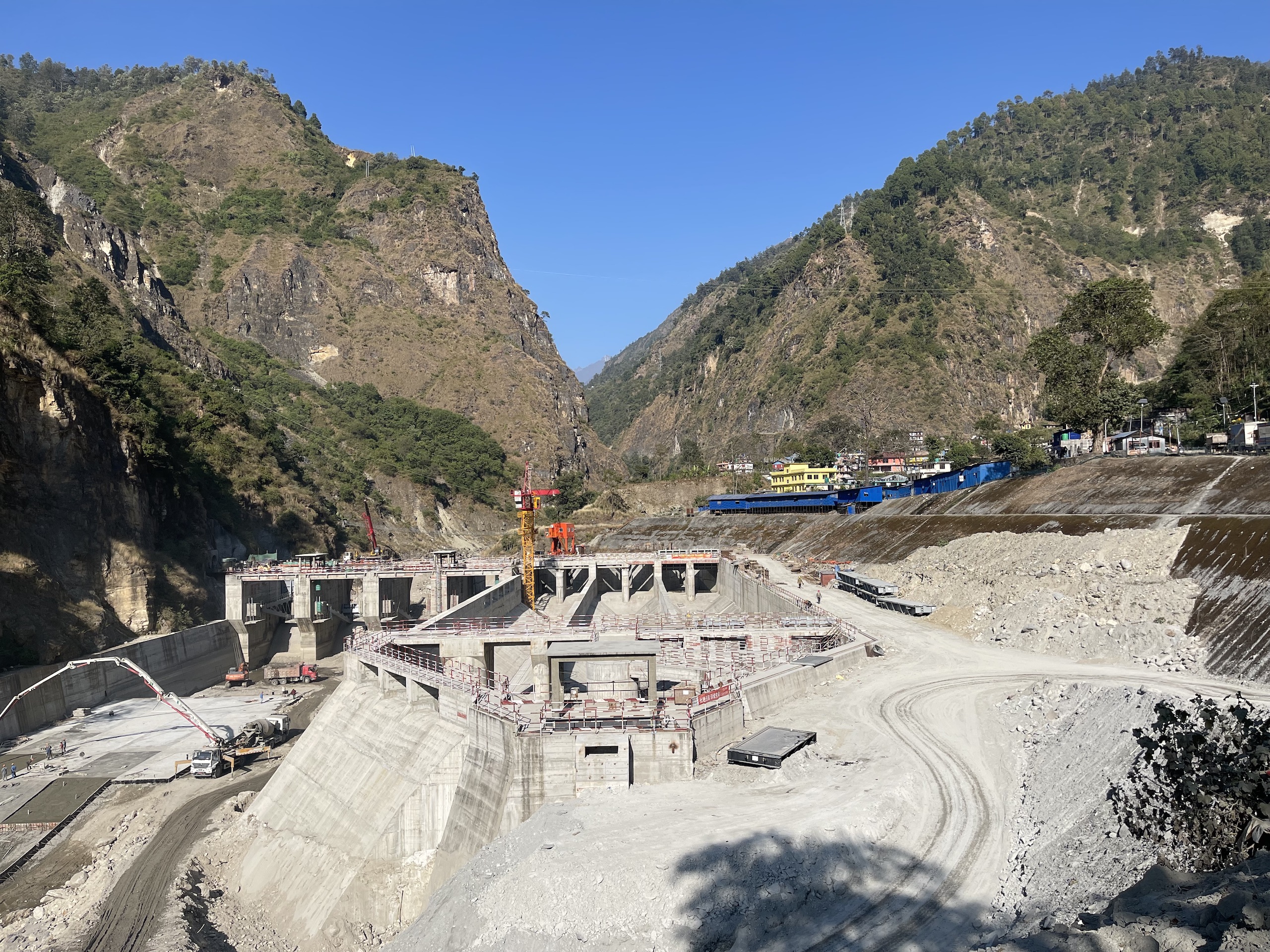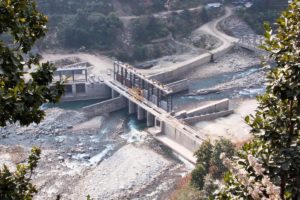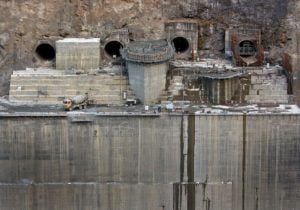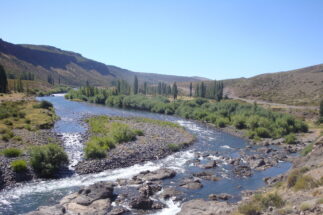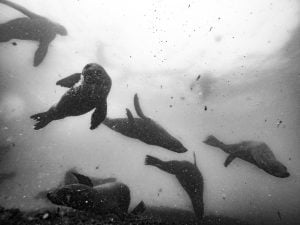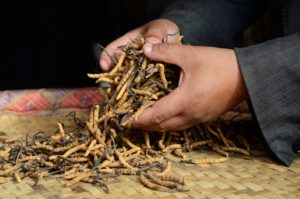On a bright winter’s morning, a small group of women gather in the tiny yard behind a makeshift shelter. They spread cereals out on the ground to dry, knit handicrafts, drink tea, and enjoy the warmth of the sun. As they start their day, they talk about how they miss their homes, gardens and livestock.
The women are all indigenous residents of Purano Syabrubesi village, in central Nepal’s Bagmati province. In August 2021, they had to flee their homes, which were in the path of massive boulders brought down by a landslide. Dikki Rani, a displaced resident, says: “I had never seen such big rocks falling before in my life. We felt safer even during the earthquake of 2015.”
The women and their families are still living with the consequences of the disaster. Two years ago, Binita Tamang says she was running a small guest house in Purano Syabrubesi, which is an ancient gateway to a popular trekking route in Langtang National Park. “My life was perfect, I had a seasonal income source from tourism, vegetables in the backyard, goats and chicken around, and a community.”
But after the landslide “all of a sudden, we became homeless”, 42-year-old Tamang tells The Third Pole. Thirty-two households were affected, and more than 100 people are still living in two temporary shelters when The Third Pole visits the village in December 2022.
The women tell The Third Pole they believe that the landslide was triggered by explosions to create a tunnel for the 20 MW Langtang Khola hydropower project, just a few hundred metres from their village. The plant is being built on the Bhotekoshi River, which flows into the Trishuli River and is part of the Ganga River basin.
Cause of landslide debated as hydropower boom in Nepal continues
Kaisang Nurpu Tamang, chair of Gosaikunda rural municipality (which the village of Purano Syabrubesi falls within), agrees that the damage is linked to the project activity. “It is true that there was damage by the earthquake of 2015 in this area, but there is damage even in the houses that are newly constructed, including our own office building,” Tamang says.
The municipality building, which was built after the 2015 earthquake, has cracks in its windowpanes, beams and outer walls, he adds. The municipality has hired a private consultancy to study the damage across the village and is waiting for its report.
Janardan Aryal is general manager of the Langtang Khola project, which is being developed by Kathmandu-based construction company Multi Energy Development. Aryal rejects the arguments of residents and the local government. “We had conducted necessary geological studies before starting the project, so [the landslide was] not due to blasting. It’s purely a technical issue so now requires more study by the government.”
Nepal produces nearly all of its electricity from hydropower, and exporting electricity to its neighbours is an important source of income for the country. It therefore plans to reach 15,000 megawatts of installed hydropower capacity by 2030. There are 123 large hydropower plants (with a capacity of more than 1 MW) operating in Nepal, with a total capacity of nearly 2,150 MW. Data from the Department of Electricity Development shows that projects with a combined capacity of 3,280 MW are being built. A further 100 projects with a total capacity of nearly 7,620 MW are waiting to be granted construction licences, as of 3 March 2023.
Central Nepal is a particular hotspot for hydropower: more than 60% of large plants in the country are in Bagmati or Gandaki provinces. Of the projects awaiting construction licences, there are about 1.3 times more proposed projects in Gandaki and Bagmati than the remaining five provinces combined. Gandaki and Bagmati have large rivers that carry substantial volumes of water, have high base flows and other favourable conditions for hydropower, as well as access to infrastructure like roads and transmission lines.
In Bagmati, which is home to more than 6 million people and is Nepal’s second-most populous province, hydropower projects have the potential to disrupt thousands of people’s lives.
Just on the Bhotekoshi and its tributaries, seven hydropower projects are currently in operation and at least three others are under construction, according to an official from the Sindhupalchowk District Coordination Committee. As of 2018 – the latest year for which comprehensive data is available – there were plans for 36 hydropower projects on the Trishuli river and its tributaries, with 23 at the planning stage with survey licences issued.
‘Our future looks very uncertain’
The temporary accommodation for Purano Syabrubesi residents has been built by the confluence of the Bhotekoshi and Langtang rivers, and most of the displaced families living there are from the indigenous Tamang and Lama communities. Young people from the affected families have left in search of work in Kathmandu and abroad, while women and older people remain.
“All our family members – as many as five people – live in a single congested room where we cook, eat, and sleep together,” says homemaker Pema Lama. “This has made our lives miserable. It’s more difficult for elderly people as they often get sick.”
The residents say they want to return to the village, but it first needs to be made safe. This could involve measures such as building retaining walls that hold back soil in the event of further tremors.
The families tell The Third Pole they have contacted local government representatives, politicians and officials from the hydropower project about their situation several times. “No one has told us about possible resettlement or provided any compensation to date. Our busy ancestral village has turned into a ghost town, while our future looks very uncertain,” says 58-year-old Khamsung Tamang, a junior officer at the Langtang National Park, who has worked there for over two decades.
“We are discussing the temporary fixing of the slope, but for the large scope of works, we need huge budget and resources, which we lack,” says municipality chair Tamang. “We have also been holding talks with the hydro project developer for arranging compensation, but we haven’t reached any understanding so far.”
Aryal points out that Multi Energy Development gave a half million Nepali rupees (about USD 3,800) to local people on humanitarian grounds to ease the housing problems. “It’s not our fault,” Aryal states.
A widespread problem across central Nepal
Similar problems are happening in Sindhupalchowk, another district in Bagmati province. In the rural municipality of Bhotekoshi, which is mostly populated by Tamang and Sherpa communities, residents of six villages, home to 600 families, have been protesting for over a year against the construction of the Sailung hydropower project. Under this, a tunnel for the plant, which is still at the planning stage, will pass directly beneath homes in the village of Lukusingh.
Even without the construction work residents say new cracks are appearing in their homes, as landslides during the monsoon weaken them.
Ratna Kumari from Lukusingh says: “We have no idea when the landslides will kill us. We go through sleepless nights during the monsoon. The Bhotekoshi River cuts down from below the village, while soil erosion causes landslides from above. Our houses are sinking.”
The villagers fear that a tunnel beneath their homes will worsen the situation and displace them from their land. In April 2022 they travelled to the capital and filed a case in the Patan High Court. A lawyer for the villagers, who asks not to be named, says this is the second case they have filed. In the previous case, they were awarded compensation in relation to a separate project, which is at the implementation phase. However, the lawyer says, “they haven’t received the compensation from the previous one yet. And this project will impact not just settlements but also schools, temples and monasteries that fall under Department of Archaeology.” The second case is ongoing.
“We need hydro projects, we need development in this area, but if the local community is displaced and does not have any involvement in the process, what is the use of these projects?” asks Norbu Gyaljen Sherpa, a resident of Panthali, another affected village. He says that the public consultation done for the proposed project was inadequate.
Hydropower in Nepal: do the dangers outweigh the benefits?
Studies have shown that Sindhupalchowk has a complex and fragile geography. Floods and landslides every monsoon result in loss of life and damage to property: in 2014, a landslide killed 156 people.
DB Budhathoki, a local activist from Lukusingh, says that the “already fragile landscape cannot withstand the construction activities. We are in a sensitive zone, thus there shouldn’t be deliberate negligence on addressing our voices. We might turn into refugees. This will be an example of destruction in the name of development.”
Ranjan Kumar Dahal, an engineering geologist and geo-hazard expert, who is associate professor in the geology department at Tribhuvan University, tells The Third Pole that tunnel blasting is often done in a controlled way, depending upon the site condition. He says developers should have a clear understanding of terrain, rock structures, slopes and seismic risks, among other details.
However, “we are still adopting an absolutely conservative approach to do these studies instead of using modern technology. Our studies are same as they used to be decades ago. Modern geological science should be adopted with honesty,” says Dahal.
The current scale of hydropower development in Nepal is absolute madnessDipak Gyawali, water expert and Nepal’s former minister of water resources
In 2018, the Nepali government published a Hydropower Environmental Impact Assessment manual. Dahal expresses dissatisfaction over its implementation. In addition, socio-economic impacts are often ignored, he adds.
The Third Pole made multiple attempts to contact the Nepal Electricity Authority about the concerns raised, but did not receive a response. Last month, Nepal’s energy secretary told local media that “other sources of energy will be expensive; they will not be viable for us. Instead of panicking, we should rather focus on generating hydropower.”
As more hydropower projects are built, the question now is how many does Nepal need, and at what cost?
Dipak Gyawali, one of the top water experts in South Asia and Nepal’s former minister of water resources, is of view that disasters are often created by ‘bad development’ practices. “Disasters are unfinished business of maldevelopment. What happens between disasters is more important than what happens after the disasters,” he tells The Third Pole.
With the rivers going dry and springs drying up, Gyawali feels the recent Joshimath disaster in the Indian state of Uttarakhand is already being replicated in Nepal. “It’s just that the authorities don’t care. Nobody desires environmental studies in Nepal. It’s limited to formalities.”
“The current scale of hydropower development in Nepal is absolute madness. Being self-reliant in energy is fine, but developing hydros just for future trade with other countries raises practical questions like ‘Is it feasible? Is it realistic?’” Gyawali says.
